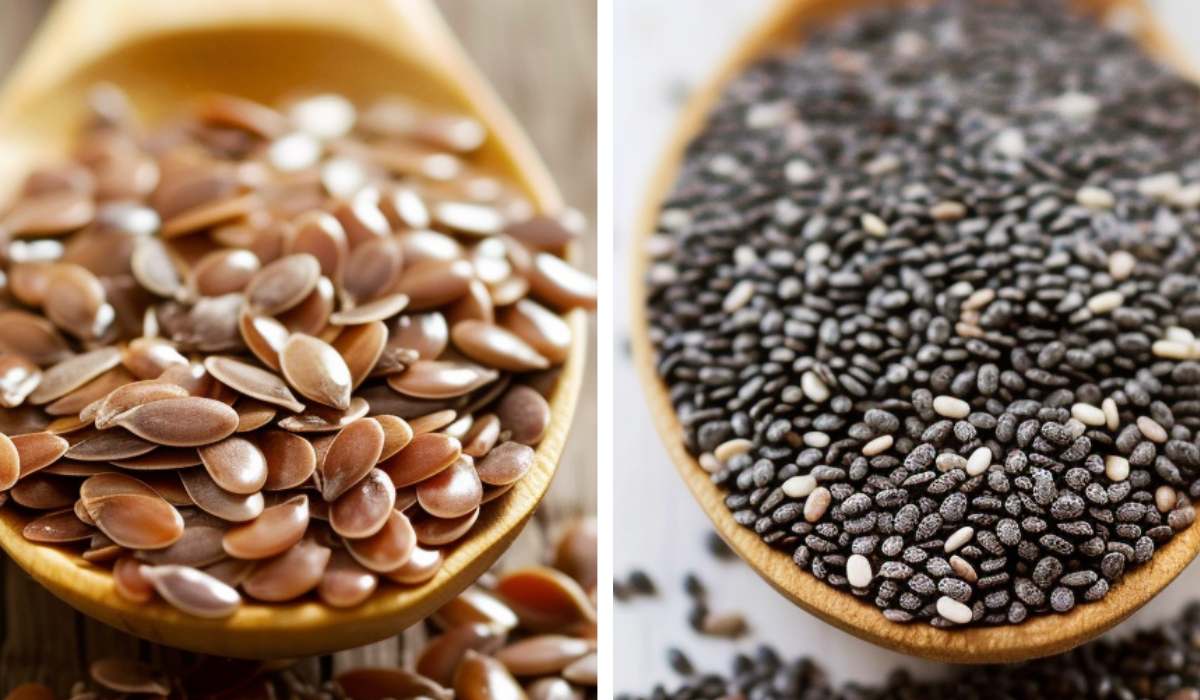Flax Seeds vs Chia Seeds: Comparing Superfoods!
So, what are the exact difference between flax seeds and chia seeds?
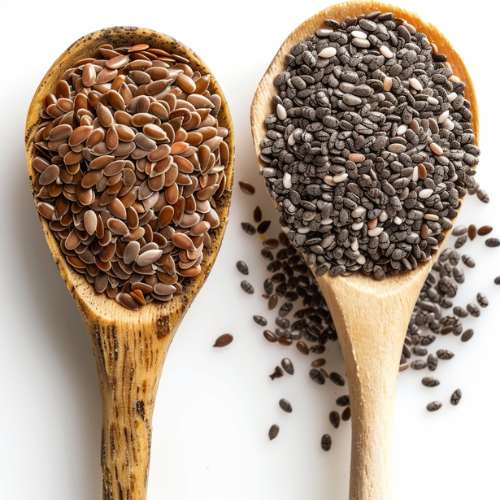
I love them both.
It took me a while to get used to them, the texture and the unique ways they can be incorporated into meals.
Now, they’re essential in my diet, adding nutritional value to everything from smoothies to salads. I find myself sprinkling, tossing, and blending them into just about everything. Particularly flax seeds.
Anyway, let’s take a quick look at both and their differences.
Flax seeds are particularly rich in alpha-linolenic acid (ALA), a type of omega-3 fatty acid and are a great source of lignans, which have antioxidant properties. I make sure to grind them before eating, as their tough exterior can be hard to digest otherwise.
Chia seeds are packed with fibre, and they swell up when mixed with liquids, which is great for making puddings or as a thickening agent. They don’t require grinding to be digested, which I find convenient.
The table below will show you, in a nutshell, their main differences.
I’ve bolded where the amount is higher, so it’s easier to see “the winner”.
Main differences at a glance
| Nutrient | Flax Seeds | Chia Seeds |
|---|---|---|
| Omega-3 | Higher in ALA (1.6g per tablespoon) | Contains ALA (1.4g per tablespoon) |
| Fibre | 2.8g per tablespoon | 5.5g per tablespoon |
| Protein | 1.3g per tablespoon | 2.0g per tablespoon |
| Antioxidants | Higher in lignans (80-320 mcg per tablespoon) | Rich in quercetin, kaempferol, myricetin |
| Calcium | 26mg per tablespoon | 77mg per tablespoon |
| Magnesium | 40mg per tablespoon | 95mg per tablespoon |
| Iron | 0.6mg per tablespoon | 1.0mg per tablespoon |
| Zinc | 0.4mg per tablespoon | 0.5mg per tablespoon |
| Potassium | 84mg per tablespoon | 44mg per tablespoon |
| Preparation | Must be ground to access nutrients | Can be eaten whole, no grinding necessary |
Exact differences in nutritional content per 100 grams
| Nutrient | Flaxseeds (per 100g) | Chia Seeds (per 100g) |
|---|---|---|
| Energy | 534 kcal | 486 kcal |
| Protein | 18.3 g | 17.0 g |
| Carbohydrates | 28.9 g | 42.1 g |
| Fibre | 27.3 g | 34.4 g |
| Fats | 42.2 g | 30.7 g |
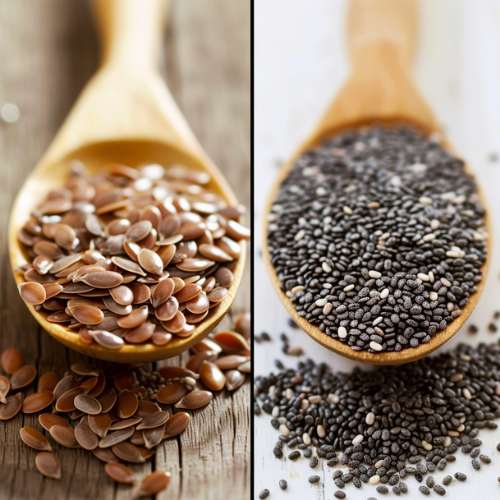
In terms of taste, flax seeds have a nuttier flavour, which I think adds a nice touch to breads and cereals. I also can’t avoid thinking they smell of fish every time I eat them. I don’t mind it (even though I don’t eat fish) but, it is there. Just in case this is a problem for you.
Chia seeds are more subtle and tend to take on the flavours they’re mixed with.
The choice between flax and chia seeds depends on what I’m after.
If I want a boost of omega-3s and a nutty hint, I’ll go for flax seeds.
For hydration and fibre without affecting flavour much, I’ll choose chia seeds.
I also listen to my instinct… what do I feel like today? Flax seed is always easier for me to add to virtually about everything. Check my ways to eaty flax seed post to see what I mean.
Below I got a little deeper into the topic, if you’re still interested.
Only purchase quality seeds
Choosing high-quality seeds is crucial. Opting for organic seeds can ensure you’re getting the most natural and nutrient-rich options available. Look for seeds that are well-packaged to protect their essential oils and nutrients from oxidation.
Find here my recommendations: WHOLE organic flax seeds, and a coffee grinder to grind the flax seeds if you haven’t got one. These are the organic non-GMO-certified chia seeds I recommend.
Flax seeds vs chia seeds: texture & taste
Flax seed
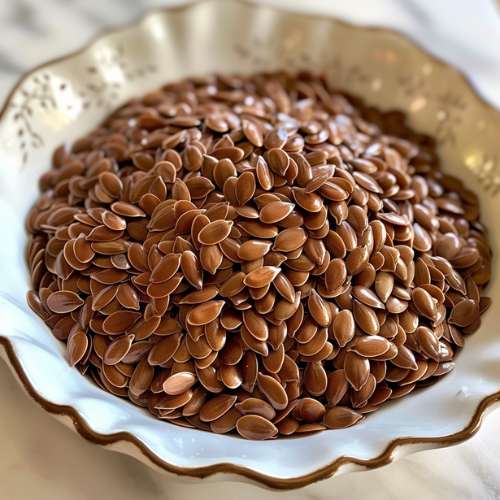
Flax seeds are typically small, flat-ish, and shaped like an oval.
I’ve seen them in two colours, a deep amber-brown and golden.
Its surface is smooth, yet they have a harder, crunchier texture when you eat them straight up (perfect for sprinkling over salads!).
As for taste, I’d say they’re subtly nutty, but not overwhelming. They do blend well if you mix them into other dishes. As mentioned above, I find they have a little fishy-flavour. I haven’t read anyone else saying this, but to me this is obvious. It is subtle though!
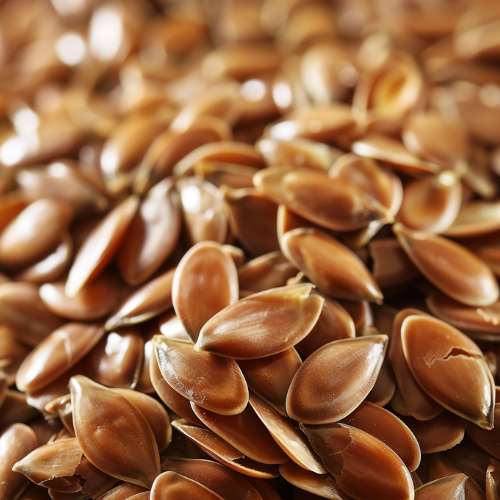
Do they lose nutrition power when cooked? Not really. Cooking flaxseeds actually helps your body absorb their goodness better, especially the omega-3 fatty acids. Just keep the heat low to keep all their benefits intact as the lignans in flaxseeds, which have antioxidant properties, can be sensitive to high heat.
Delicious dishes with flax seed:
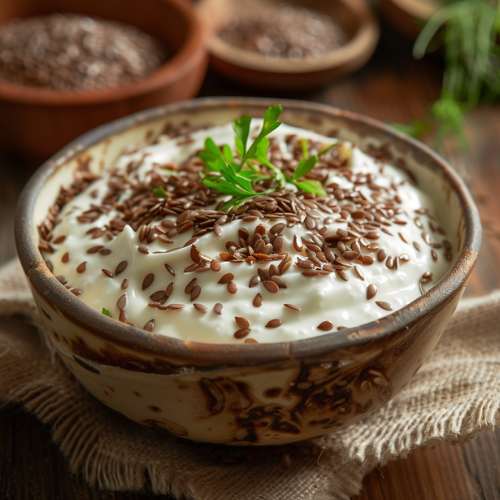
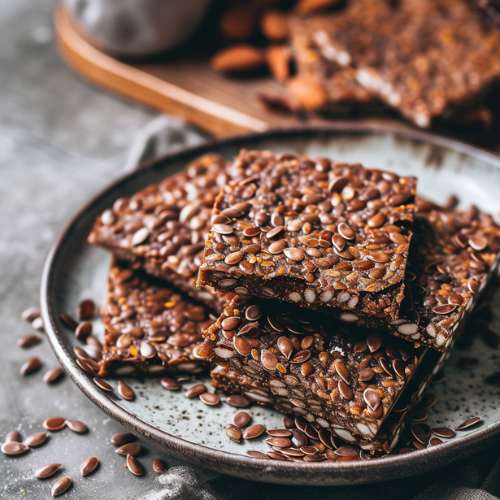
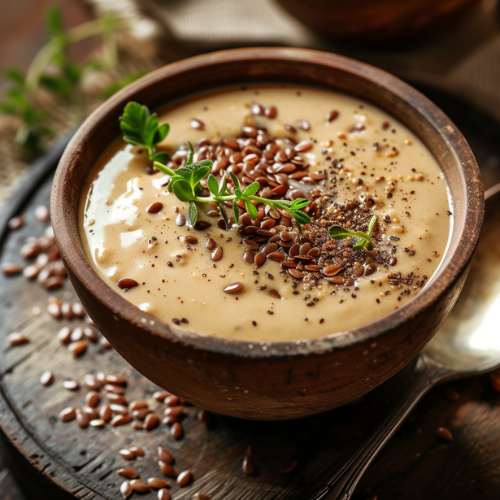
Chia seeds
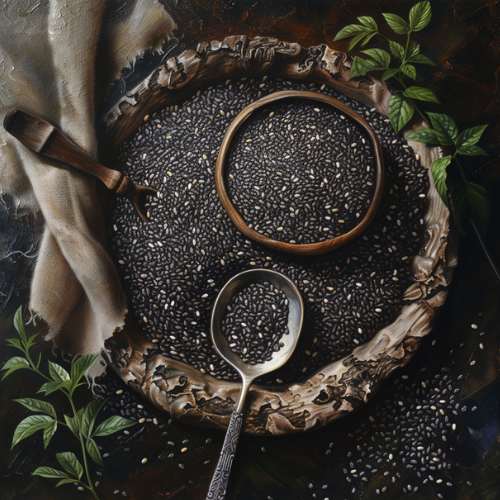
Chia seeds are a little bit different.
They’re small as well, but rounder, almost like tiny specks.
They’ve got a more uniform, dark greyish-black colour with some speckles of white.
Dry, they’re pretty crunchy, but once they swell, it’s like a soft, chewy bead in your mouth.
Taste-wise, they’re very mild, almost bland, which makes them super versatile.
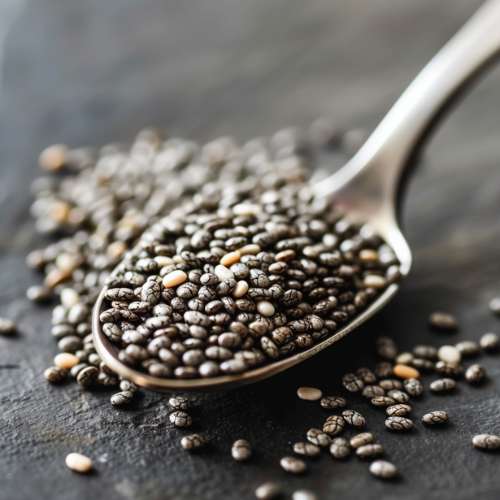
Do they lose nutrition power when cooked? No worries about cooking chia seeds—they keep their nutritional punch even when heated. Cooking can actually help make their good stuff easier for your body to use, like with flax seeds. Since chia seeds are great at thickening things up just as they are, you might not need to cook them to enjoy their benefits.
Chia seeds make a thicker gel faster than flax
Flaxseeds form a gel when soaked in water, but not as thick as chia seeds. They don’t absorb as much water as chia seeds.
Flaxseeds need more time to swell up and often have to be ground first to fully release the gel.
Chia seeds can soak up 10-12 times their weight in water and make a thick, tapioca-like gel. The gel forms quickly, even in cold water.
Chia seeds can make delicious dishes:
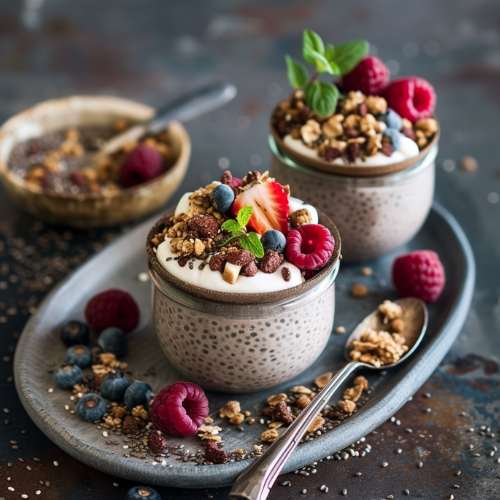
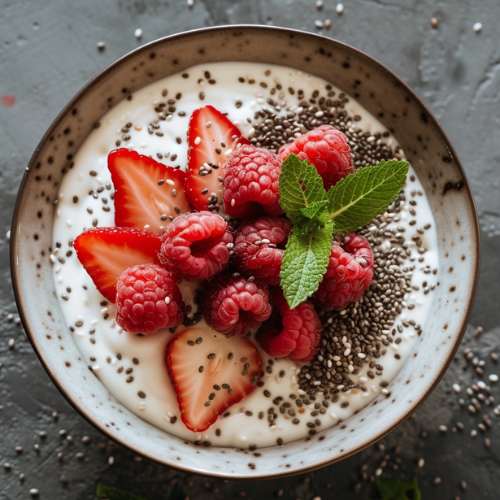
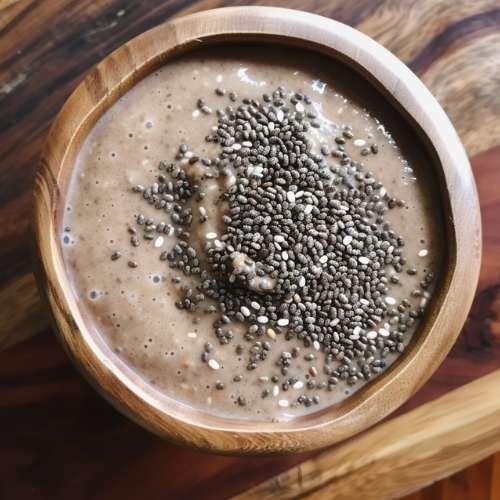
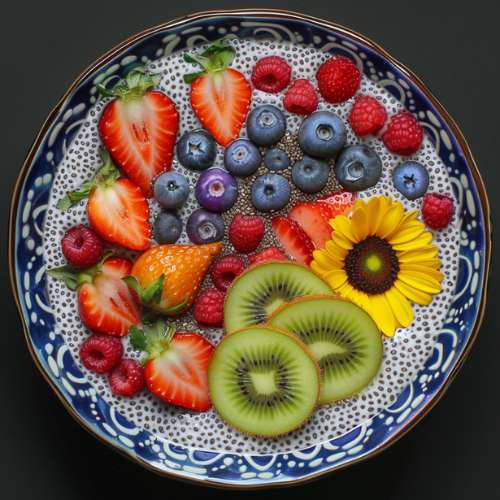
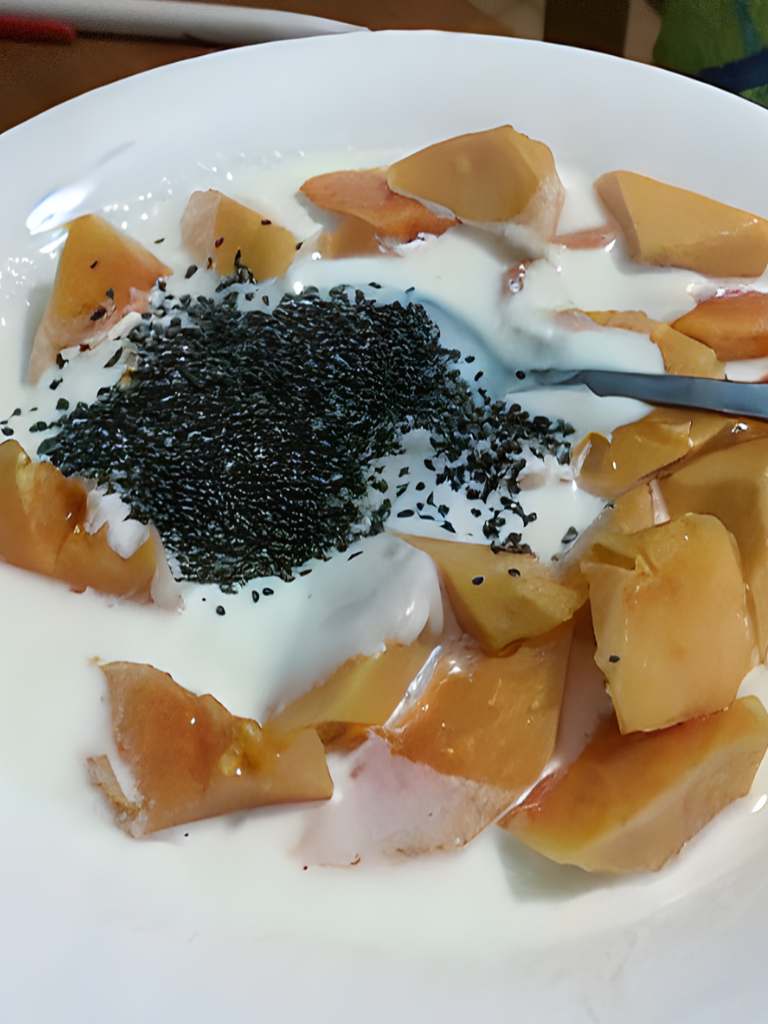
Flax seeds vs chia seeds: health benefits
Flax seed
Being a nutritional powerhouse, I’m particularly impressed by their high omega-3 content, fibre, and lignans.
Let’s take a look at each.
Omega-3 fatty acids
Flax seeds are one of the richest plant sources of alpha-linolenic acid (ALA), a type of omega-3 fatty acid.
Our bodies can’t produce ALA, so it’s essential to get it from our diet.
Here’s why I find ALA so important:
- Heart health: Regular intake may help reduce blood pressure and improve heart health.
- Anti-inflammatory: ALA has anti-inflammatory properties that can be beneficial in reducing the risk of chronic diseases.
Fibre content
These tiny seeds are packed with both soluble and insoluble fibres.
Let me break down the importance of each:
- Soluble fibre: Helps maintain blood sugar levels and reduce cholesterol.
- Insoluble fibre: Supports digestion and prevents constipation by promoting regular bowel movements.
Lignans
I’ve learnt that flax seeds are an excellent source of lignans, which are plant compounds that have antioxidant and oestrogen properties.
Here’s how they help:
- Antioxidant: They help protect our body’s cells from oxidative stress.
- Hormonal balance: Lignans can act like oestrogen in the body, potentially reducing the risk of hormonal cancers.
Time to make the chea seeds shine 🙂
Chia seeds
Chia seeds are packed with an impressive range of health benefits.
Let’s look at the ones I consider to be most important.
Antioxidant properties
Chia seeds are high in antioxidants, which help fight the production of free radicals in your body, protecting your cells from damage.
These antioxidants also contribute to a longer shelf life for the seeds.
Protein quality
Chia seeds are a great source of protein – especially important for people like me who follow a plant-based diet.
The protein in chia seeds is of high quality as it contains all nine essential amino acids, which are necessary for muscle repair and growth.
(Chia seeds offer about 17 grams of high-quality protein per 100 grams, containing all nine essential amino acids necessary for muscle repair and growth, as seen above.)
Calcium for bones
Incorporating chia seeds into my diet supports bone health thanks to their high calcium content.
They actually offer more calcium per gram than most dairy products, making them an excellent choice for maintaining strong bones.
(Chia seeds provide about 631 mg of calcium per 100 grams, surpassing many dairy products in calcium content and making them a stellar choice for bone health!)
My recommendations
Choosing high-quality seeds is crucial. Opting for organic seeds can ensure you’re getting the most natural and nutrient-rich options available. Look for seeds that are well-packaged to protect their essential oils and nutrients from oxidation.
Find here my recommendations: WHOLE organic flax seeds, and a coffee grinder to grind the flax seeds if you haven’t got one. These are the organic non-GMO-certified chia seeds I recommend.
Wrapping up
It is clear that both of these tiny superfoods pack a hefty nutritional punch, each with its own set of superpowers.
Whether it’s the omega-3 rich flaxseeds that have become a non-negotiable part of my morning smoothie or the versatile, fiber-filled chia seeds that turn my overnight oats into a pudding-like delight, I’ve found countless ways to incorporate these nutritional titans into my daily eats.
Flaxseeds, with their nutty essence and need for a quick grind, have become my go-to for adding a heart-healthy boost and a dash of antioxidants to my meals.
On the other hand, chia seeds, with their incredible ability to gel and blend into virtually anything, offer a subtle way to up my protein and calcium intake without overpowering my favourite dishes.
In the end, the choice between flax and chia seeds doesn’t have to be an either/or proposition.
Depending on the day, my health goals, or even just what I’m craving, I find both have their place in my kitchen.
They remind me that sometimes, the smallest things can have the most significant impact on our well-being.
Conclusion
So, here’s to flax and chia seeds—two of nature’s tiniest treasures that have made a big difference in how I eat, feel, and thrive.
Whether you’re a seasoned superfood aficionado or just starting to explore the world of nutrient-dense foods, I hope you find as much joy and health in these seeds as I have.
Happy sprinkling, tossing, and blending!

